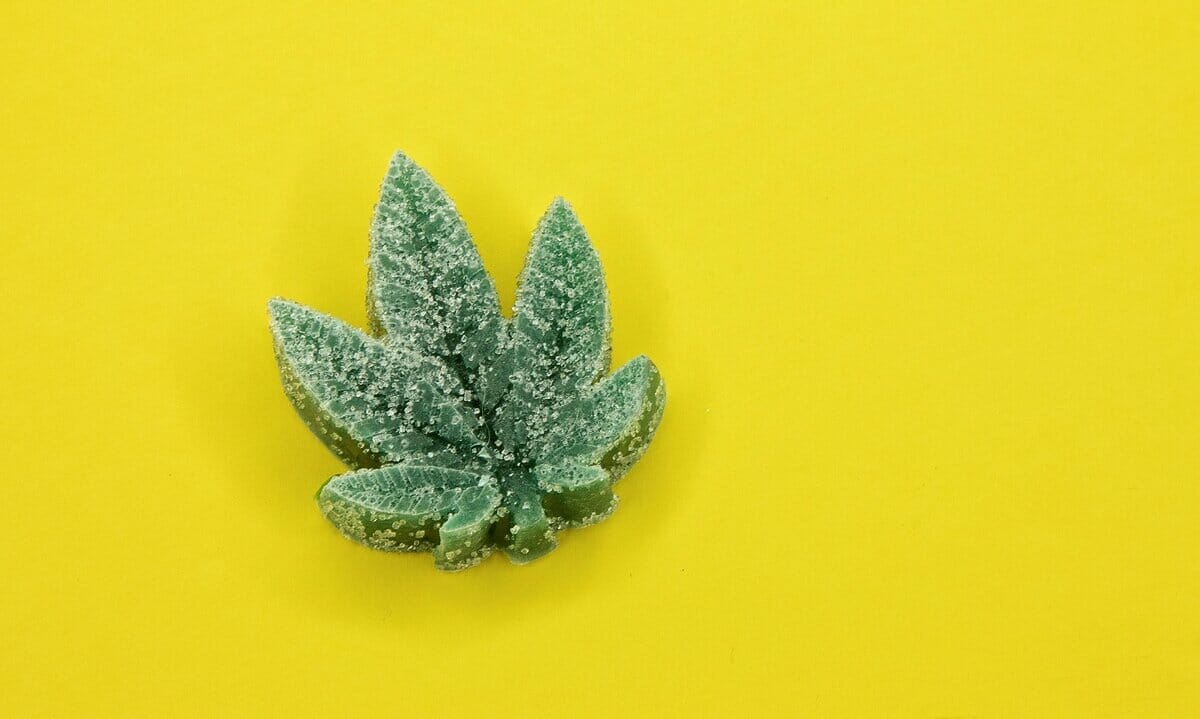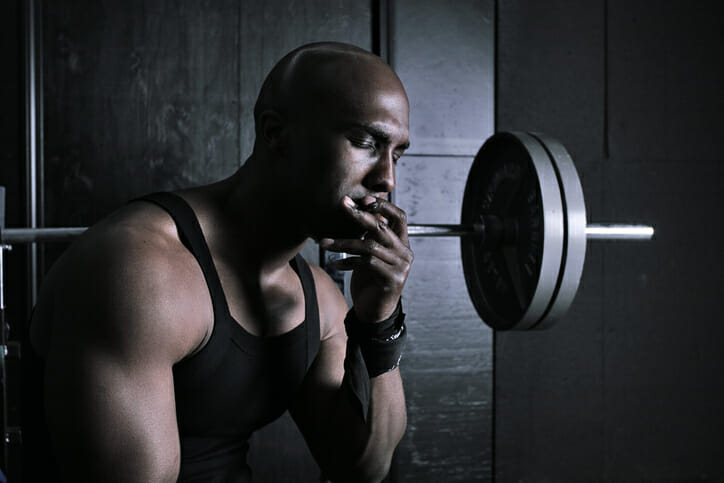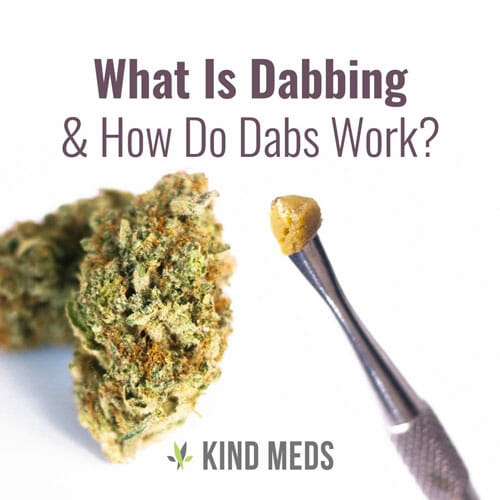Athletics and Marijuana: Enhancer or Problem?
Written by Chris Weatherall on Aug 17, 2021This summer, the world watched in collective shock as one of the brightest on the field had her dreams stolen from her. Sha’Carri Richardson tested positive for THC and was stripped of her chance at Olympic gold.
Sha’Carri had been told just days before the US Olympic Trials that her mother had passed away while she was training. To cope with an “emotional panic” that very naturally followed, she had a drag for which she has now been forced to apologize. THC is a banned substance under Olympic rules, and so they took her opportunity from her.
Does Cannabis Help With Running or Training?
Unlike the myriad of other banned substances, there seems to be no unfair advantage offered to players by THC. It doesn’t give a huge boost to one’s muscles like steroids or allow your blood to carry more oxygen like PEO, and an epileptic who treats their seizures with a cannabinoid tincture is only made less susceptible to seizures during events and training. But it would be unfair to say that there are no potential benefits of marijuana to those playing sports; it’s just that most of the potential benefits of marijuana that we know about are about maintaining health more easily instead of gaining performance directly.
The Possible Benefits of Medical Marijuana in Sports

Medical weed offers professional sports many benefits. It can potentially help with a variety of symptoms, including:
Reducing Pain
One of the primary uses of marijuana is for reducing pain as an analgesic. Even as far back as ancient Egypt and Medieval Europe, people have been using marijuana as a pain reliever for everything from minor aches and pains to more concentrated forms being used for surgery. Unlike many of its more addictive cousin compounds, marijuana achieves this job with very little in the way of stress to the organs in any way, shape, or form.
It is no news that athletes of all kinds turn to painkillers to help them get through practice, particularly in high-level sports. The need is so severe that in the NFL, seventy-one percent of players report misusing prescription opioid painkillers. When you look at marijuana and see that it can seriously assist with chronic pain (the kind most frequently associated with sports injuries and aches), it’s only natural that all sorts of athletes, from Michael Phelps to ultra-long-distance runners like Avery Collins, are using it.
Lower Risk, Better Result?
Long-term use of most over-the-counter painkillers is associated with damage to the kidneys and liver, which can lead to health complications at best and early death at worst. Medicinal amounts of marijuana haven’t had any such documented effects while providing better and more complete relief to its users.
A huge percentage of adults in the US are using dangerous amounts of painkillers like ibuprofen and Tylenol. As much as 15% of the adult population admitted to using painkillers on a daily basis that puts them at risk for liver damage, internal bleeding, heart attacks, and other dangers.
When you combine the demands on your body that a professional athlete endures along with the need to have every bit of your body at absolute peak condition, the risks from traditional painkillers rise to even more severe peaks and are more likely to arise.
These risks (and benefits) aren’t unknown to the players either. Ex-Baltimore Ravens player Eugene Monroe remembers his experience with pain management and the chronic pain his career has left him with and noted that trying to manage the pain with pills was “slowly killing” him, but that using different kinds of cannabis products has helped him to efficiently function and manage pain without all the side effects.
And it’s not just over-the-counter painkillers we’re talking about here. The NFL has a long history of supplying its players with opioids to get through the worst of the pain, and this has led to a rate of opioid use rate that’s four times higher than the rate of the general population, though that barely scratches the surface of the problem. The Drug Enforcement Administration also took an interest in the high levels of opioid drug use in the agency and a federal lawsuit against the NFL.
So, on the one hand, you have all of these complications, high doses of over-the-counter drugs that barely scratch the pain, and health risks — and on the other hand, you have an herb with the potential for additional health benefits. The choice for pain management for athletes seems beyond clear at this point.
Decreasing Inflammation

Both THC and CBD have been found to be helpful in managing any inflammation that can occur after exercising. This is one of the things that makes cannabinoids so helpful in managing pain. Unlike other pain relief methods, cannabinoids slow down cytokine and chemokine production. Cytokines are the first step in the inflammatory process and trigger a storm of responses, upregulating immune system activity in ways that create the painful swollen tissues associated with the dreaded DOMS (delayed onset muscle soreness) that follows a big workout.
Different cannabinoid mixes not only slow down the inflammation process by reducing cytokines but also increase the production of T-regulatory cells, which work to prevent inflammatory responses to anything except actual illness, potentially making you more resistant to inflammation in the long run. This means that regular use of edibles or other cannabinoid products might make an athlete able to go longer and suffer less as they train.
But, given their long-term release, are edibles bad for runners or other athletes? Ultra-long-distance runner Avery Collins certainly doesn’t think so — while he doesn’t do marijuana during competitions, due to prohibitions against doing so, he regularly will take an edible 30 minutes before going on a run. He notes that it hasn’t inhibited his progress, as he regularly places in extremely high-level competitions.
The ‘Twisties,’ the ‘Yips,’ and Anxiety
If there’s one thing that we know from both studies and experience, it’s that Sha’Carri Richardson is far from the only person to turn to cannabis to help deal with stress and anxiety. Some of the greatest minds of history, like Abraham Lincoln, have turned to it for similar reasons in their time. But anxiety isn’t something that just exists in times of national and personal trauma. It’s also there every minute of every day for a lot of athletes when they step up on the national stage.
Another of our Olympic aspirants had a run-in with the beast of anxiety — Simone Biles in the 2020 Tokyo Olympics had to withdraw, due to a case of what she called the “twisties,” an unshakeable doubt in her body (still recovering from an injury), and so withdrew from the remainder of the competition rather than potentially injure herself. Biles made the correct decision, as previously other gymnasts coming back from injury had been forced to ignore these feelings and ended up grievously injured. It is impossible to perform at a high level, especially in sports with the near mortal stakes of gymnastics, without unshakeable self-confidence.
Another case of high-profile anxiety in sports is professional baseball and golf’s case of “the yips.” Coined by golfer Tommy Amour, the term refers to how periodically, extremely high-level performers come down with anxiety that makes them doubt themselves, become unfocused with fine motor skills, and suddenly become less adept at the sport than they previously were. One of the most famous cases is Steve Sax, who went from being one of the most feared rookie pitchers in the game to being unable to throw a pitch over the plate. The yips is an extremely feared condition that has ended the careers of many athletes, benched others, and even in the best cases, has led to months or years of retraining and off-field work with sports psychologists or trainers.
This type of extreme anxiety has shown up in NFL kickers, in free throwers in the NBA, and all over the sports world. While using marijuana for treatment of the yips and the twisties hasn’t been explored extensively yet, to think that it wouldn’t find a use for at least some players finding themselves grappling with the anxiety of the crowd seems unlikely – at least once it’s allowed.
Neurological Inflammation
One of the biggest places that we’ve seen medical breakthroughs regarding cannabinoids is in neurological diseases. Everyone remembers the news story about the remarkable transformation of children with severe epilepsy, where their seizures were dramatically reduced or eliminated by just a little bit of cannabis tincture. Since then, the neuroprotective effects of cannabis compounds have blossomed.
Cannabis has been shown to be helpful with Parkinson’s disease, Huntington’s disease, Tourette’s, MS, encephalomyelitis, and many other diseases. It truly appears that in a wide variety of cases where there is damage or inflammation to the myelin sheaths in the brain, that marijuana may potentially hold key compounds that could be extremely important. This naturally makes one wonder: could it be used to prevent or assuage neurological conditions in high-impact sports?
The Big CTE
Chronic traumatic encephalopathy (CTE) is the disease that football players, boxers, and other people in high-impact sports who take repeated hits to the head can develop. It can cause memory loss, confusion, aggression, suicidal tendencies and can significantly increase the risk of progressive dementia, just to name a few of the risks. It has been talked about a lot recently and has been a focus of a huge number of changes to rules at all levels in a huge number of sports. So naturally, with an increased understanding of a disease, we’re looking for a solution.
One of the possible solutions that have come out of the woodwork is, you guessed it, cannabis. The same neuroprotective qualities that help against MS and epilepsy symptoms might help it to treat or prevent the extreme inflammation and damage that leads to CTE. This is a bright light in an extremely dark story, and it is one that we hope will bear fruit in the near future.
Protecting the Lung, Heart, and Brain
CBD can help decrease inflammation while protecting the lungs, heart, and brain during injury and after. Researchers continue to study CBD’s short-term neuroprotective effects in the brain for possible treatment of sports concussions.
So, Is Marijuana Good for Athletes?

It should be readily evident at this point that marijuana has a wide array of potential benefits for athletes of all stripes. Whether it’s for treating pain, preventing it in the first place, treating anxiety, or possibly treating some of the most severe ghosts of the sports world, marijuana absolutely has a place in any athlete’s toolkit.
For pain treatment and prevention, edibles, topical creams, and tinctures all provide a way to get targeted or broad-spectrum relief from pain and get back up and running to train hard again the next day.
Anxiety that stands in the way of performance can be effectively countered for many folks, and there is no reason to think that stops at the edge of the field. A therapeutic dose may be exactly what the doctor — and the coach — ordered.
And while we can’t say today that you’ll protect your brain with marijuana, given the other benefits of the herb, for an athlete, it doesn’t seem like there’s a reason not to try it. So hopefully, it doesn’t take the Olympics too long to catch up to the medical community and see that preventing its participants from getting the best medical care available in the name of propriety is wrongheaded at best.
Until then, there’s nothing that should prevent anyone not headed to the Olympics from getting good natural medicine.
*Editor’s Note: This article was originally published Dec 22, 2017 and has been updated August 18, 2021.







